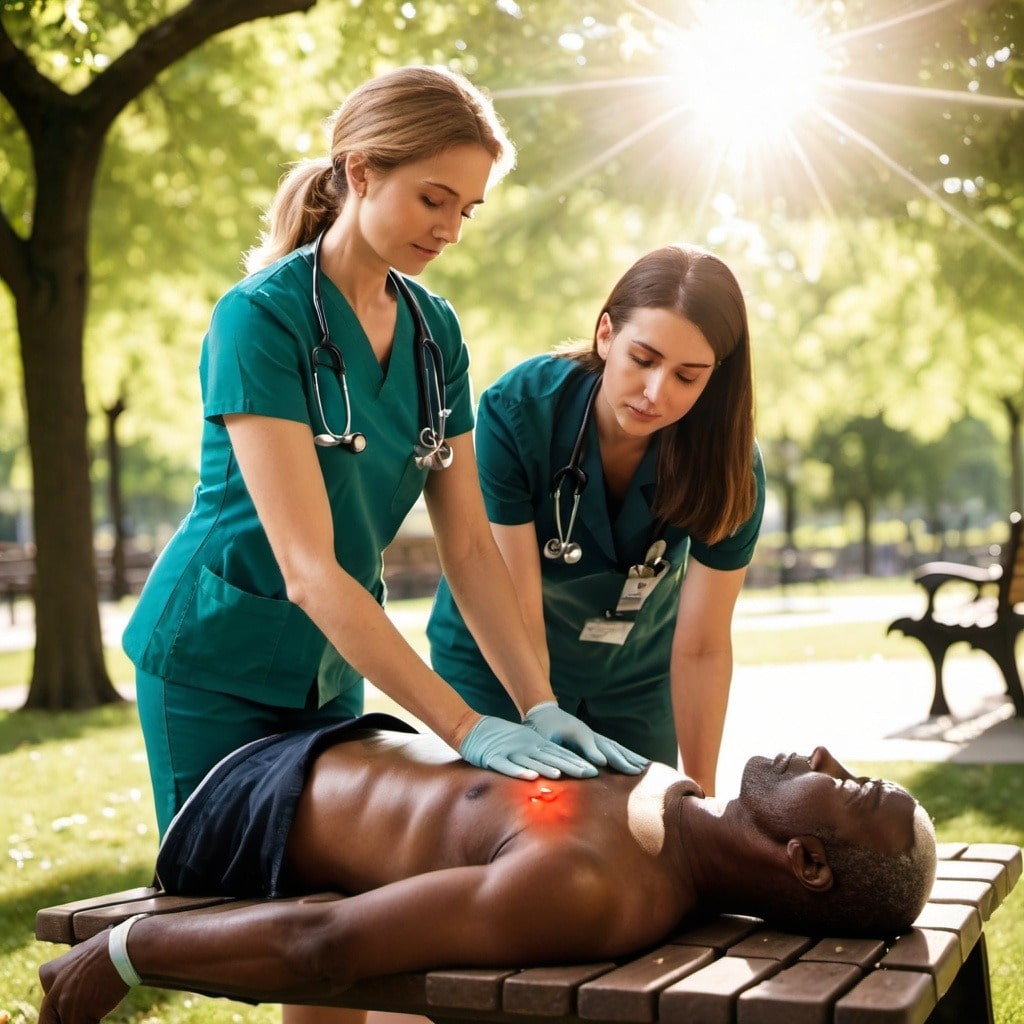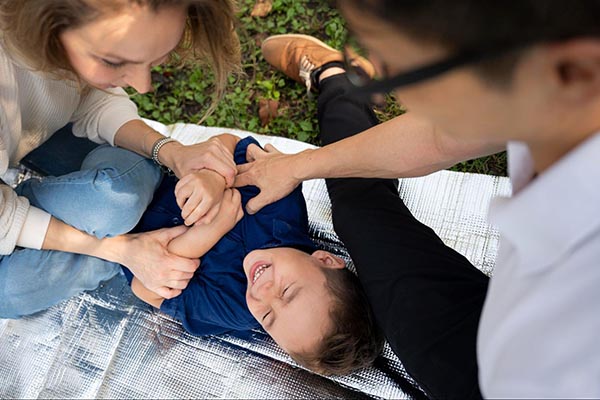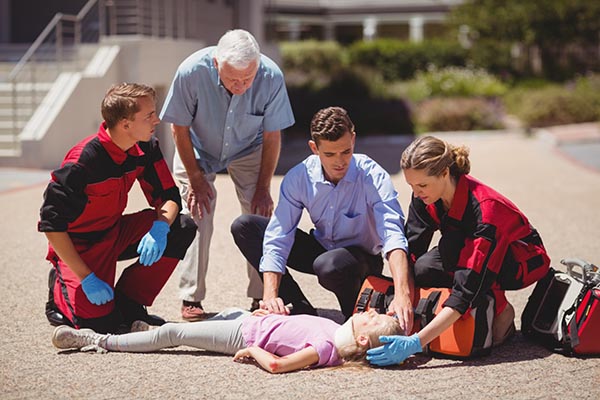
Creating a safe environment in childcare is a top priority for parents and caregivers alike. Whether you run a daycare center or work as a nanny, knowing how to respond to emergencies is crucial. CPR and First Aid training are essential components in ensuring the safety and well-being of the children in your care. In this guide, we’ll explore the importance of CPR and First Aid training in childcare settings and how it can make a difference.
CPR, or Cardiopulmonary Resuscitation, is a life-saving technique used in emergencies when someone’s heartbeat or breathing has stopped. Knowing how to perform CPR can mean the difference between life and death in critical situations.
In childcare, accidents or health emergencies can happen without warning. Children might choke on food, suffer from an allergic reaction, or experience breathing problems due to asthma. CPR training equips caregivers with the knowledge and skills to act quickly and effectively.
First Aid training covers a wide range of skills and techniques used to provide initial care in medical emergencies. This includes treating cuts, burns, fractures, and more. First Aid training also teaches you how to assess a situation and determine the best course of action.
For childcare providers, First Aid training is essential. Kids are naturally curious and sometimes clumsy, which can lead to minor injuries or more serious accidents. Having First Aid knowledge ensures you can handle these situations calmly and competently.

One of the most significant benefits of CPR and First Aid training is enhanced safety. When caregivers are trained, they are better prepared to handle emergencies, leading to quicker response times and better outcomes for the child involved.
CPR and First Aid training boost confidence in caregivers. Knowing you have the skills to handle an emergency can reduce panic and anxiety, allowing you to provide the necessary care efficiently.
Many states and local governments require childcare providers to have CPR and First Aid certification. Ensuring that you and your staff are trained not only keeps you compliant with regulations but also demonstrates your commitment to providing a safe environment.
Parents entrust their children to caregivers with the expectation that they will be safe and well-cared for. When they know that the caregivers are trained in CPR and First Aid, it provides peace of mind that their children are in good hands.
There are numerous organizations that offer CPR and First Aid training, such as the American Red Cross, the American Heart Association, and local community centers. When selecting a program, ensure it is reputable and provides certification upon completion.
CPR and First Aid skills can fade over time. To maintain proficiency, schedule regular refresher courses for yourself and your staff. Many organizations recommend renewing certification every two years.
Training is just one component of creating a safe environment. Develop a comprehensive emergency plan that includes evacuation routes, emergency contact information, and designated roles for staff members during a crisis.
Ensure your childcare facility is stocked with essential First Aid supplies. This includes bandages, antiseptic wipes, gloves, and any specific items needed for children with known medical conditions.

Consider the story of a daycare provider who noticed a toddler choking on a piece of fruit. Because she was trained in CPR and First Aid, she was able to perform the Heimlich maneuver quickly, and the child recovered without any long-term effects.
In another instance, a caregiver was able to recognize the signs of an allergic reaction in a child who had accidentally ingested peanuts. Thanks to her training, she administered an epinephrine injection and called emergency services, resulting in a positive outcome.
Promote a culture of safety by encouraging ongoing education for all caregivers. Attend workshops, seminars, and conferences related to child safety and health care.
Create opportunities for staff to share knowledge and experiences. Regular meetings to discuss any incidents and review procedures can enhance everyone’s understanding and preparedness.
Involve parents in child safety initiatives by providing them with information about your training programs and emergency plans. This transparency builds trust and reinforces your commitment to their children’s safety.
CPR and First Aid training are not just optional skills for childcare providers—they are essential. By investing in training and creating a comprehensive safety plan, you ensure a safe and secure environment for the children in your care. This preparation not only saves lives but also builds confidence and trust with parents and the community. Make safety a priority, and empower yourself and your team with the skills needed to protect and care for children effectively.
Don’t wait for an emergency to stress the importance of CPR and First Aid training. Equip yourself with the knowledge and skills to act confidently in critical situations. Sign up for CPR and First Aid Classes with CPR Classes Near Me, where expert instructors provide both theoretical understanding and practical experience. Join a community committed to creating safer spaces for children and ensure you’re prepared for any emergency. Visit our website or contact us today to learn more about class schedules and locations. Your proactive approach to safety could be the difference between life and death. Take the first step now and empower yourself with lifesaving skills.
Our primary goal is to ensure that you receive a top-quality CPR/First Aid certification. With our in-person training in Austin, you can learn CPR and BLS in just one class. Your presence is all that’s needed to continue with your lesson! During your session, you will complete all the live-training components necessary to ensure you receive your AHA Healthcare Provider certification card.
Our CPR Classes in Austin are discounted to $59.95 (saving you $20), and our CPR + First Aid Class is offered at $79.95 (also saving you $20). When looking for CPR Classes, ensure to check for the American Heart Association seal. Other sites might seem cheaper but frequently lack the official training credentials demanded by employers.
Upon successful completion of the course, you will obtain a CPR certification that is valid for two years. The AHA CPR certification is recognized with the highest acceptance rate among employers nationwide.
Indeed! Enroll in any CPR Certification Austin BLS course to extend your certification for an additional two years. The in-person BLS course and the Renewal Class are identical.
Anyone capable of completing the course independently should consider pursuing CPR training and CPR Certification. There is no minimum age restriction for obtaining a CPR certification in Austin through the American Heart Association (AHA)..
CPR training needs to be carried out in person to guarantee its effectiveness. Our experienced instructors offer an engaging and dynamic learning experience. Typically, employers do not recognize CPR certifications that are obtained solely through online courses.
All authorized American Heart Association training centers are obligated to display the entire video. After a three-hour session with CPR Classes Near Me Austin, your BLS CPR eCard will be promptly issued by the instructor on the same day!